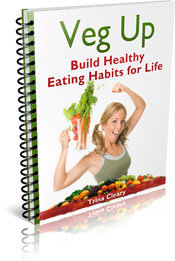|
|
Planning a Vegetable Garden
Enjoy planning a vegetable garden with this 20 point checklist. Taking time for vegetable garden planning before you get in and dig will save you time and heartache down the track. Getting the garden you want can be tricky if you don’t know what you want. Take the time to enjoy the process of planning your garden. Being sure of your vision will add to your joy as your garden unfolds around you. - When you’re planning a vegetable garden think about who will use the garden. Keep in mind the concepts of harmony, focus and contrast as you plan.
- Observe your garden. Don’t rush to plant or dig until you’ve learnt about your garden’s existing advantages and disadvantages. What are the sunniest and shadiest positions? What are its special features? Which spaces are you drawn to?
- If you’ve moved to a new residence with a new garden, consider observing your garden for a season before making any major changes. You never know what beauties will emerge as the seasons change. A drab Spring/Summer plant might surprise you with cheering Winter blooms while other plants in your garden are resting. Bulbs may appear or perennials re-shoot. An awkwardly positioned tree may provide you with essential Summer shade, or a sculptural beauty in Winter.
- Find out from your neighbours and local nurseries which plants thrive in your area. Local conditions may suit particular fruits and vegetables more than others. Making a connection with your neighbours early makes it more viable later to exchange seeds and produce.
- Do you have a favourite fruit or vegetable that you must have in your garden? You may need specific growing advice in order to nurture your favourites in the local conditions. You may wish to reserve the optimal space in your garden for your must-have favourite, and plan the rest of your garden around its survival.
- When planning a vegetable garden, consider the climate realistically. What is the rainfall? Are Winters long and frosty? Summers long and dry? Autumn’s windy? Select plants and provide shelter and irrigation appropriate to the climate.
- Consider the surroundings of your garden. Are there tall buildings or trees neighbouring your fenceline? What impact will their shade, root structure and leaf fall have? What features in the surrounding area do you wish to highlight? For example, you may wish to leave a clear view of an impressive tree, or frame the shape of a nearby building with plants or garden structures.
- Spend time in your garden. Get a feel for the spaces. Examine the existing plants and make friends.
- Check your soil out. Is it well-drained, sandy, loamy, clay? Are there many rocks in the ground? What’s the pH?
- Grab a pencil, rubber and ruler and sketch an outline of your garden. Draw in and label the garden beds, features and structures. Are there any cables, pipes or drains to be managed?
- Look at various garden plans on the internet and in garden magazines. Borrow the best ideas for planning a vegetable garden and include them in your own garden design. Start a scrapbook or ideas board of plants, designs and tips that appeal to you.
- Adapt your garden plan with your intended design. Mark out paths and make sure they're wide enough to push a wheelbarrow. Mark in sheds where you'll store your vegetable gardening tools. Mark in any greenhouses or polytunnels you'll use to nurture seedlings and extend your growing season.
- Select suitable fruits and vegetables based on your previous research. You may need particularly drought-tolerant or frost-hardy plants. Remember that many
edible herbs and plants
are ornamental and can be shown off in your garden.
- Don’t forget to plan a space for yourself in your garden. Plan seating and rest areas in vantage points where you can relax and contemplate the outcomes of your work. Provide play areas for kids, pets and yourself.
- Seek out solutions for the challenges you and your garden may face. For example, are you short on space? Check out espaliered or
dwarf fruit trees.
Do you have unattractive surroundings you wish to block out? Use quick-growing screening plants. Is direct sunlight in short supply? Consider
container gardening
so that you can easily move plants around the available space. Do you have extremely poor soil? Perhaps
raised vegetable garden beds
will allow you to build up soil quality more quickly. You can find out answers to your specific gardening woes via the abundance of resources available on the internet and in gardening magazines.
- Assess the potential for welcoming local wildlife into your garden. Are there native birds or animals that you would like to provide food, water or habitat for?
- Now is the time to integrate recycling and re-use systems into your garden design. Can you keep chooks to clear pests and fallen fruit, eat your kitchen scraps and provide you with valuable manure? Where will you position your compost bins? Is there a small, sheltered, warm (but not too warm) space available for a worm farm? What building materials can be recycled for new structures, garden beds and containers?
- Have you provided harmony, focus and contrast? Planning a vegetable garden is primarily about a space for growing food, but you can also design your veggie patch to work harmoniously with the rest of your garden.
- Now that you’ve designed your ideal garden, determine order of priority for the gardening tasks necessary to achieve your vision. Consider time, usefulness, budget and urgency to prioritise jobs and purchases.
- Remember if you try to do it all at once you’re likely to burn out early.
Vegetable gardening
is an endless task, so try to be a bit zen about it and enjoy the process.
Back to Home Vegetable Gardens from Planning a Vegetable Garden
Back to Healthy Eating Guide home from Planning a Vegetable Garden
|
|


More Growing Raw
Newsletter
Be sure to subscribe to "More Growing Raw" newsletter to receive monthly healthy eating tips, Growing Raw news and updates.
Growing Raw E-books


|









